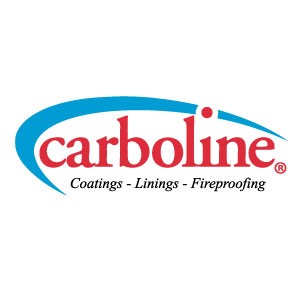
Nobody knows precisely how many man-made chemicals exist, but it’s estimated to be around 150,000 total. These chemicals get manufactured, processed, refined, sold and eventually used by the companies and consumers who use them.
Still, at every stage throughout that process, these chemicals spend some time in storage. Considering that many are corrosive to steel, it begs the question—how many different coatings or lining materials are needed to protect the tanks that store these 150,000 chemicals?
Though the specific figure may be unknown, it is far less than the 150,000 chemicals housed within these tanks. So, how can so few linings protect against so many chemicals? And what properties would all these linings have in common that equips them to cover such a wide spectrum of chemicals?
To understand the answer, it’s important to have a basic understanding of the chemistry behind polymers—the basic building blocks used in high-performance industrial coatings.
The Chemistry Behind Polymers
Most coatings have absorption qualities that are based on a polymer’s cross-link density. Absorption, or the penetration of chemical molecules into the molecular structure of a coating, is difficult to eliminate and requires long drying times and/or chemical cleaning. It’s also highly dependent on the cross-link density—whether the molecular structure of the coating is open or closed—of the cured polymer.
As polymers cure, they form a “maze” of molecules that result in a three-dimensional polymer network. This is how two-, three- or even four-component liquid coatings become a solid polymer film. Cross-link density is a great way to think about how many intermolecular “links” exist per unit area.
The higher the cross-link density of a polymer, the lower its absorption rate. To illustrate this point, a simple analogy is to compare chicken wire to mosquito screen. The chicken wire keeps chickens in, while allowing flies and mosquitos to enter as well. Though the mosquito screens also keep chickens in, the mesh is small enough that it prevents flies and mosquitos from entering.
Chemical Resistance & Polymer Tank Linings
This analogy is a powerful tool for understanding the chemical resistance of polymer tank linings. Generally speaking, the smaller the chemical molecule, the tighter the lining’s cross-link density needs to be to prevent absorption. A tank coating with a higher cross-link density—like the mosquito screen—will effectively protect the underlying surface by keeping out both large and small chemical molecules, such as acids and solvenets.
This explains why some of the most aggressive chemicals—like methanol, methylene chloride, methyl ethyl ketone and hydrofluoric acid—erode away most linings. They are all relatively small molecules. Conversely, because of their high cross-link densities, polymer tank linings such as epoxy novolacs, vinyl esters and epoxy phenolics are particularly good at protecting steel from these harsh chemicals.
In addition, cross-link density has a physical impact as well—pun intended. Polymers with high cross-link density tend to be harder, more impact-resistant and overall more robust, at the expense of being more brittle and less flexible.
These are all broad generalizations, but they provide a useful, high-level framework for thinking about the physical and chemical properties of coatings. Though cross-link density is a very deep topic that extends far beyond the scope of this blog post, anyone involved in the coatings industry can benefit greatly from gaining a basic understanding of the chemistry behind polymer linings.
So, the next time you’re looking for a lining or coating for a specific chemical exposure, gather any information you can about the service—such as the identity of the chemical, the concentration, the temperature or other details. Not only will this help you select a lining that best fits the service requirements—the cross-link density of that polymer tank lining will undoubtedly be one of the main driving factors in the decision.
Learn More About Carboline’s Line of Fuel Tank Lining Systems
Download our fuel storage tank brochure for lining solutions that protect your tank and its assets.

